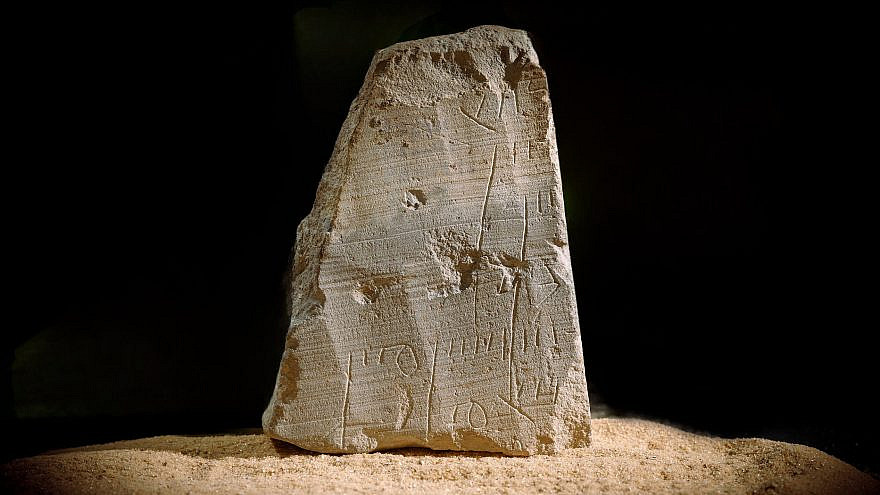Someone forgot his receipt.
A financial record from two millennia ago was uncovered on what was Jerusalem’s main thoroughfare during the Second Temple period, the Israel Antiquities Authority announced Wednesday.
The inscription on the small stone tablet found on Pilgrimage Road in the City of David site was probably a receipt or a payment instruction recorded by a person engaged in commercial activity during the Second Temple period, the independent governmental archaeological body said.
Engraved with letters and numbers, the tablet was discovered in an area considered a bustling commercial area at the time.
One line includes the end of the name “Shimon” followed by the Hebrew letter mem, and in the other lines there are symbols representing numbers. Some of the numbers are preceded by their economic value, marked with another mem, an abbreviation of ma’ot (Hebrew for “money”), or with the letter resh, an abbreviation of reva’im (Hebrew for “quarters”).
Four similar Hebrew inscriptions have been documented in Jerusalem and Bet Shemesh, all with names and numbers carved on similar stone slabs and dating to the Early Roman period (37 BCE to 70 C.E.), according to an article in the archaeological journal Atiqot. This, however, is the first inscription found to date within the boundaries of the city of Jerusalem at that time.
According to the researchers, the inscription was carved with a sharp tool onto a chalkstone (qirton) slab. Apparently, the stone slab was originally employed as an ossuary (burial chest), commonly used in Jerusalem and Judea during the Early Roman period.
The intriguing find was discovered in the lower city square, located along the Pilgrimage Road. The road, extending some 660 yards, connected the city gate and the area of the Siloam Pool in the south of the City of David to the gates of the Temple Mount and the Second Temple, and served as the main thoroughfare of Jerusalem.
The stone tablet on which the inscription was engraved was retrieved from a tunnel of a previous excavation at the site, dug at the end of the 19th century by British archaeologists Frederick Bliss and Archibald Dickie, who excavated tunnels and pits.
Although the inscription was found outside of its original archaeological context, it was possible to date it to the Early Roman period, at the end of the Second Temple period, based on the type of script, the type of stone slab and its similarity to other contemporary inscriptions, the Antiquities Authority said.
According to the researchers, “the everyday life of the inhabitants of Jerusalem who resided here 2,000 years ago is expressed in this simple object. At first glance, the list of names and numbers may not seem exciting, but to think that, just like today, receipts were also used in the past for commercial purposes, and that such a receipt has reached us, is a rare and gratifying find that allows a glimpse into everyday life in the holy city of Jerusalem.”
Minister of Heritage Rabbi Amichai Eliyahu said, “The remarkable discovery on the Pilgrimage Road in Jerusalem uncovers another aspect of Jewish life in the city from 2,000 years ago. The unique excavations in the area position the City of David as a pivotal center in the Jewish people’s global historical narrative.”
Eli Escusido, director of the Israel Antiquities Authority, said, “It is not a coincidence that the many discoveries which are being revealed in the excavation shed light on the centrality of this road even during the Second Temple period.
“With every discovery, our understanding of the area deepens, revealing this street’s pivotal role in the daily lives of Jerusalem’s inhabitants 2,000 years ago.”


























